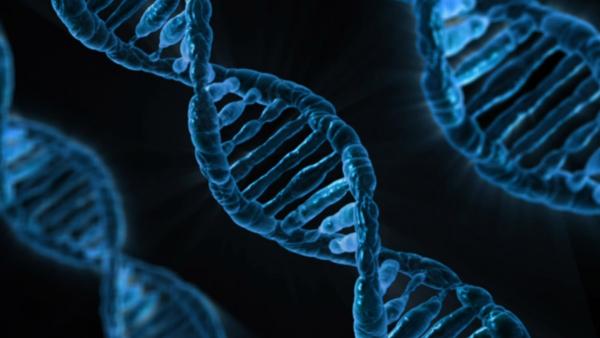Genome Modifications Affect Protein Variation in Tumors
Examining DNA Methylation Could Facilitate Targeted Cancer Therapy

IRP researchers have linked a gene-modifying process called DNA methylation to changes in cellular proteins that may contribute to cancer.
As an amateur home chef, I know from experience that the ingredients you use can dramatically alter the way a recipe turns out. Leave out oregano and your tomato sauce will be bland; add too much red pepper and your plate of pasta will scorch your tongue.
In this way, it turns out, cooking is a lot like the process by which your genes manufacture the proteins that keep your body running. Just like the same recipe can result in a delicious or disappointing meal depending on how you modify it, a certain gene can produce several varieties of a single protein that behave in different ways. In some cases, these alterations may lead to disease. New IRP research has revealed that a genetic regulatory process called DNA methylation can contribute to cancer by changing which forms of a protein a gene produces.1
Our genes use a DNA-like intermediary molecule called messenger RNA (mRNA) to produce proteins. A certain gene can only produce one protein, but the mRNA molecule the gene uses to produce that protein can take multiple forms, known as isoforms. Each mRNA isoform generates a slightly different version of the same protein.
The process of DNA methylation attaches a chemical tag called a methyl group to a section of DNA, and past research has shown that patterns of DNA methylation in cancer cells look very different from methylation in normal cells. Moreover, certain types of cancers have been found to show consistent patterns of DNA methylation.
“These are not just random changes in DNA methylation — they actually happen at reproducible positions in certain cancer types,” says IRP senior investigator Laura Elnitski, Ph.D., the new study’s senior author. “There’s something very distinctive about certain tumors in that they have extensive amounts of DNA methylation across their genetic landscapes.”
To investigate the connection between DNA methylation and isoform variation in tumors, Dr. Elnitski and IRP postdoctoral fellow Yun-Ching Chen, Ph.D., took advantage of recent technological advances that allow scientists to measure the levels of a gene’s various mRNA isoforms in a cell. In 11 of the 18 tumor types the pair examined, they discovered a substantial number of statistically significant associations between the amount of methylation at a certain genetic location and the abundance of a certain isoform. That is, certain isoforms became markedly more or less common as the amount of methylation at a certain genetic site changed. In addition, more of these methylation-isoform relationships were identified in genes known to be involved in the development of cancer than in genes unrelated to cancer.
Dr. Elnitski and Dr. Chen then used the isoform-influencing methylation patterns they found to categorize tumor samples into subtypes. This process ended up grouping the tumors into previously established subtypes that were based on features other than methylation patterns. For example, tumors in patients with a type of thyroid cancer called thyroid carcinoma were already known to differ based on mutations in certain genes, and classifying thyroid carcinoma tumor samples based on their DNA methylation and isoform usage patterns resulted in the same subgroupings.
“Right now, doctors conventionally group tumors for the purpose of clinical decision-making based on what mutations they have, but this may be a complementary way to do it,” says Dr. Elnitski. “We’re trying to drill down to the molecular level to show that there are alternative ways to group tumors together based on which isoforms are being produced in the tumor cells.”
Precision medicine for cancer depends on this ability to group tumors into very specific categories with distinguishing features that are relevant to treatment. As a result, knowing which isoforms are present in a tumor could one day enable clinicians to select treatments that target the particular subtype of cancer a patient has. Because DNA methylation is much easier to measure than the presence of various mRNA isoforms in a tumor cell, establishing the connection between DNA methylation and isoform usage would greatly simplify this sort of precision medicine.
“We’re using DNA methylation and isoforms as signposts to tell us what’s happening in tumor genomes,” Dr. Elnitski explains. “Once researchers build this information system, at some point in the future, doctors will be able to look at those signposts, match them to a tumor characteristic, and know exactly what to do to treat it.”
Subscribe to our weekly newsletter to stay up-to-date on the latest breakthroughs in the NIH Intramural Research Program.
References:
[1] Aberrant DNA methylation defines isoform usage in cancer, with functional implications. Chen YC, Elnitski L. PLoS Comput Biol. 2019 Jul 22;15(7):e1007095. doi: 10.1371/journal.pcbi.1007095. [Epub ahead of print]
Related Blog Posts
This page was last updated on Tuesday, January 30, 2024
